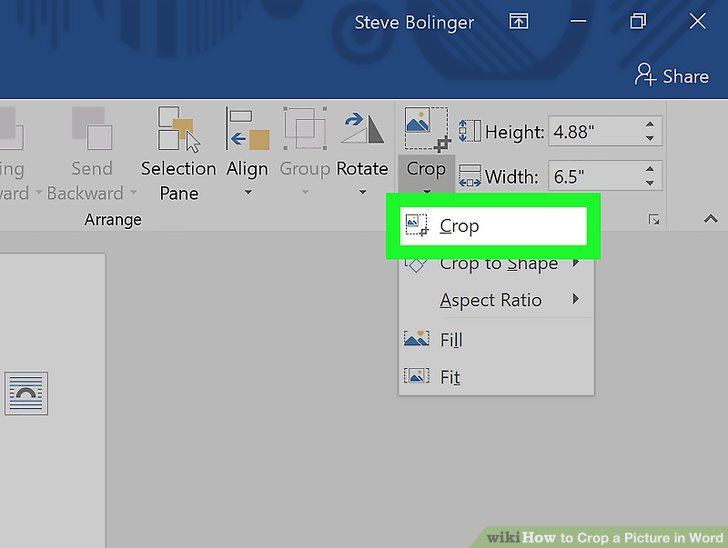

The easiest way to do this is to right-click on the picture to display a Context menu. You can switch a drawing from the drawing layer to the text layer (or vice versa) by changing whether it is floating or inline. Why? Because some pictures-inline pictures-are stored on the text layer, and this is the layer being displayed. Of course, some pictures are visible when working on your document in Draft view.

In order to see the pictures on these other layers, you need to switch to Print Layout view. Thus, any pictures residing in the header/footer layer or, more commonly, on the drawing layer are not visible. If you are using Draft view, Word displays only the contents of the text layer of your document. Most people do their writing and editing in Draft or Print Layout views. What does this discussion about layers have to do with whether pictures show up in Word? There are a number of ways to view your document, each accessible from the ribbon tools or by clicking on one of the View buttons that may be visible on the status bar, just below your document.

If you place an inline graphic in your document, it is on the text layer if you place a floating graphic in your document, then it is on the graphics layer. Graphics are much more common on both the text layer and the graphics layer.

People don't normally place graphics on the header/footer layer, but they can. Similarly, graphics can appear on all three layers. For instance, headers and footers are composed primarily of text-text obviously appears in the text layer, and text boxes can appear in the graphics layer. In reality, text can appear in all three layers of your document. The other layer is the drawing layer, which contains graphic objects. First is the header/footer layer, which contains both the header and footer information that appears on every page in your final document. You are probably most familiar with the text layer, in which your text actually resides. Each document has several different layers. Word uses a "layered" approach to documents. When we’re happy with the way the shape looks, pressing Enter will perform the crop and the parts of the picture that are outside the shape will be removed.Īny Picture Effects we now apply are applied to the cropped shape of the image.Have you ever placed a picture in your Word document, only to have the picture not be visible when you are later working in the document? This seems to be a common occurrence, and there are several reasons for this. We can resize the cropping shape by dragging on the resize handles. Select a shape and we can see the shape superimposed on the picture. Hovering over the Crop to Shape option displays a gallery of the different shapes we can use: However, if you click on the bottom half of the crop tool button,we see the option Crop to Shape. Clicking the top half of the crop tool button activates the standard rectangular cropping area that we can resize using the drag handles on the corners and along the edges. The crop tool is available on the Picture Tools contextual tab whenever a picure is selected. But did you know that you can crop to a shape too? There are a variety of shapes available for us to use as “cookie cutters”. The crop tool in Microsoft Word 2010 allows us to remove unwanted areas of an image inserted into Word.


 0 kommentar(er)
0 kommentar(er)
